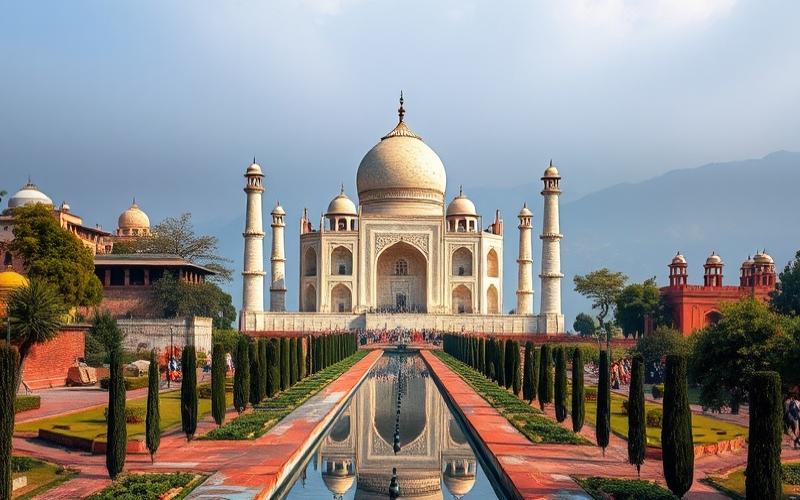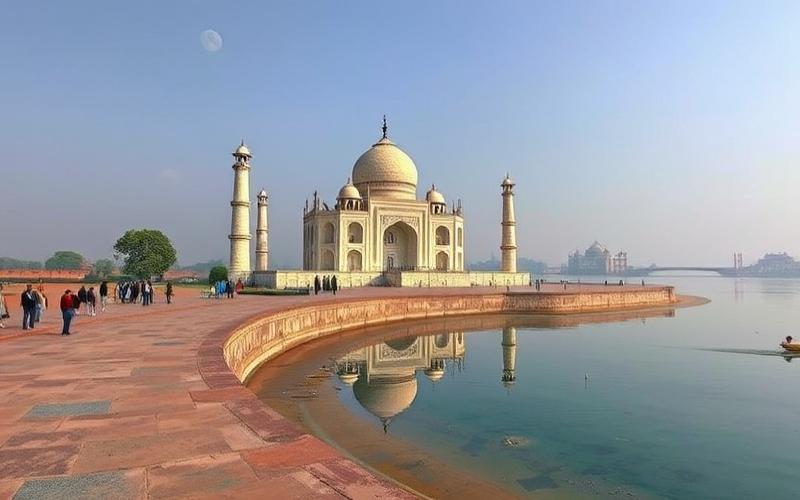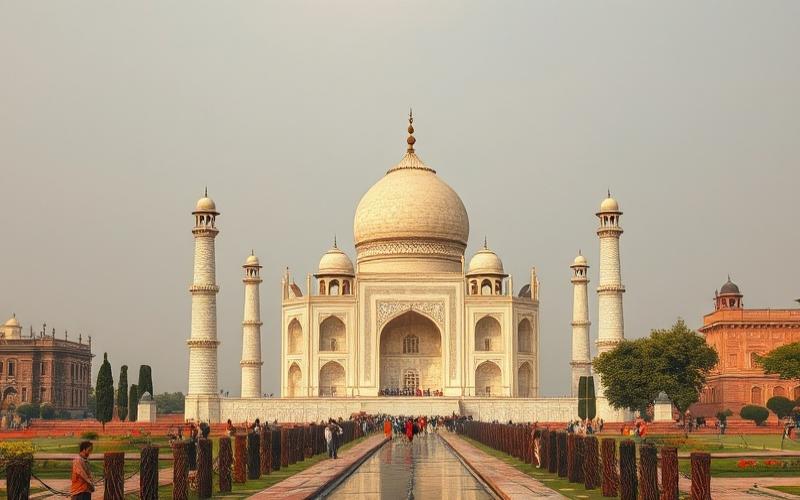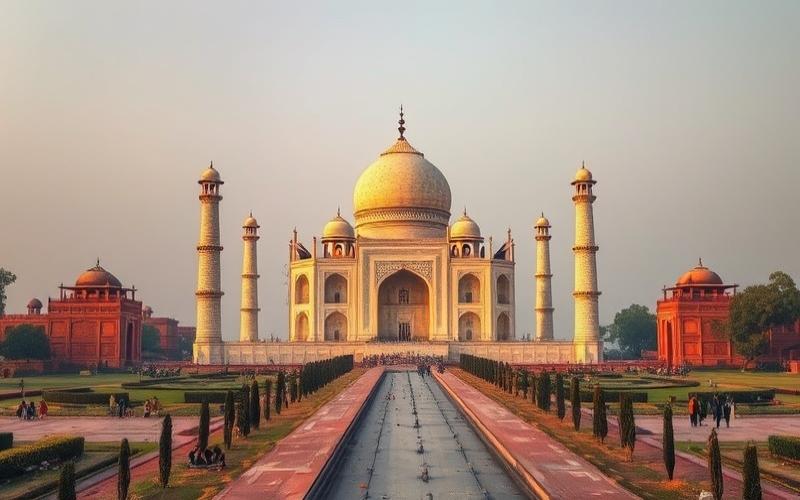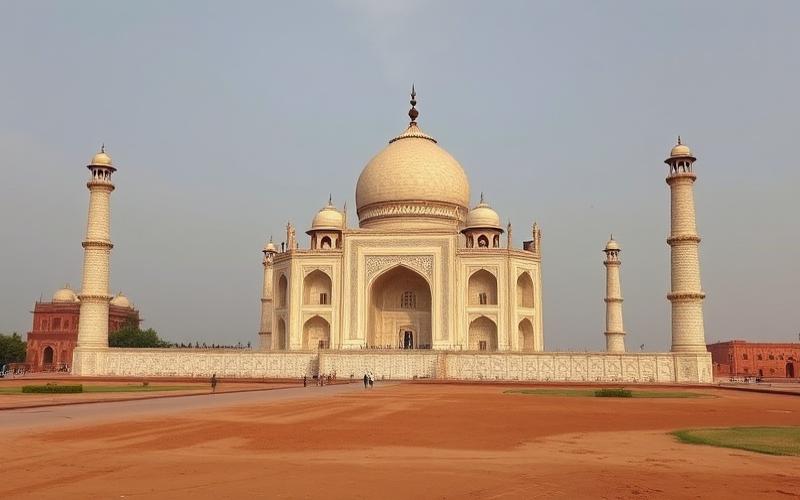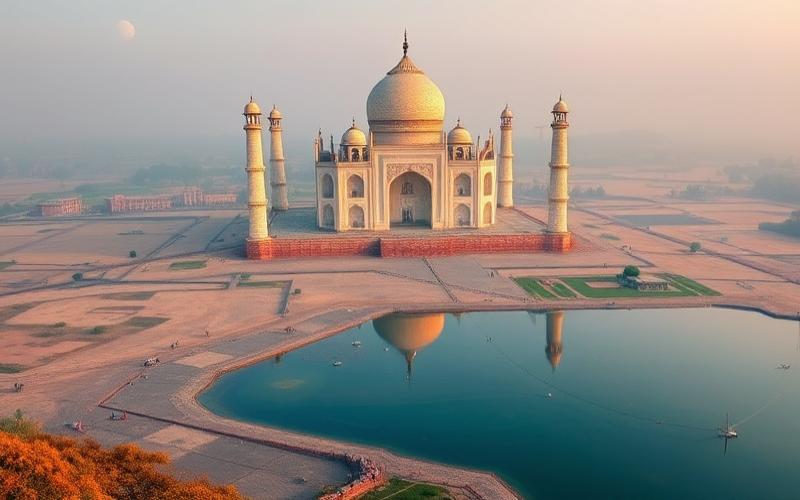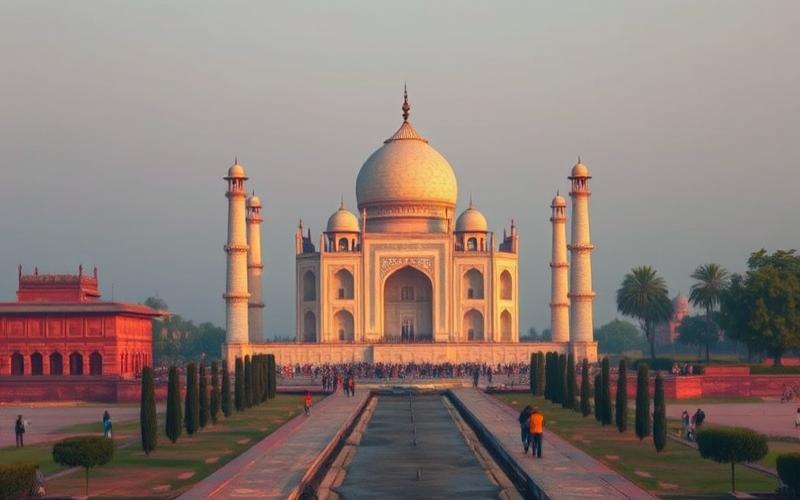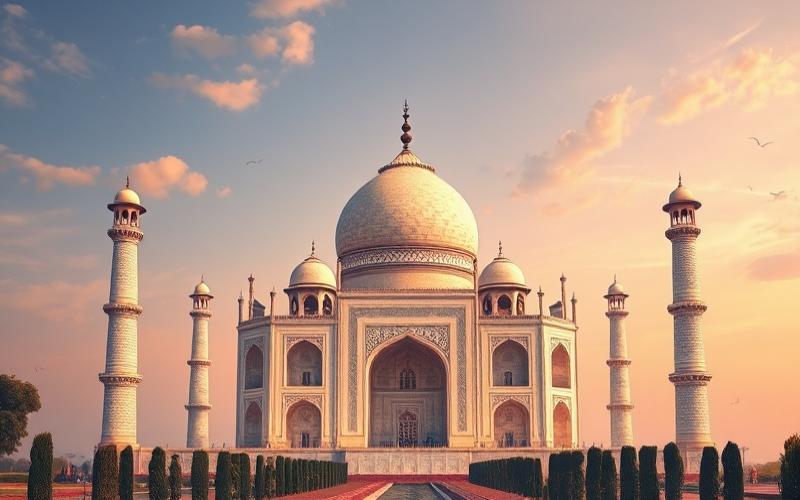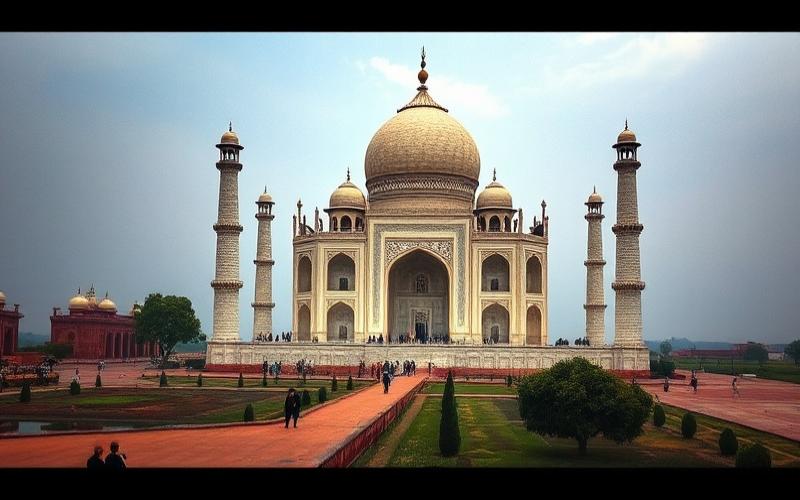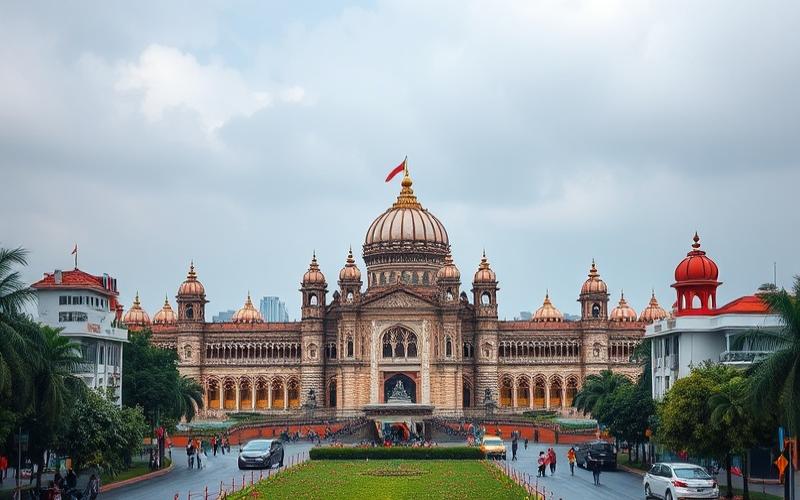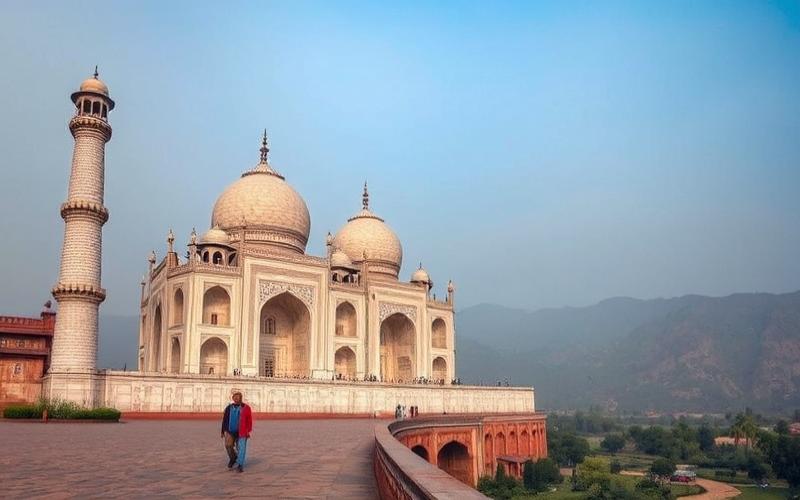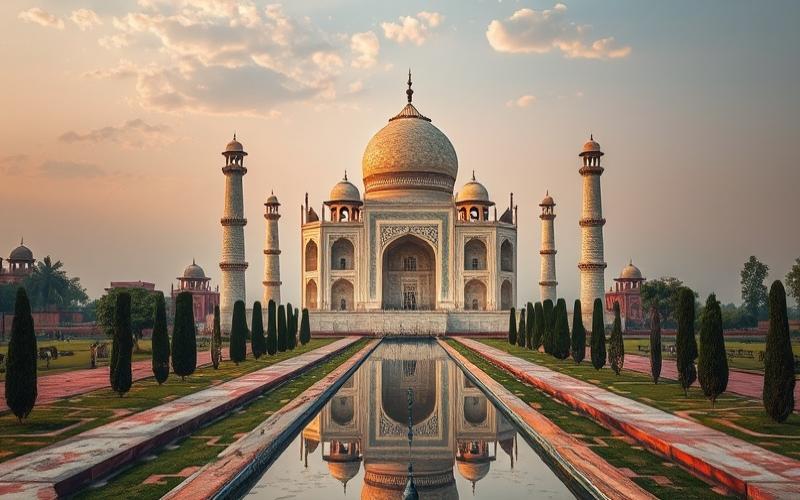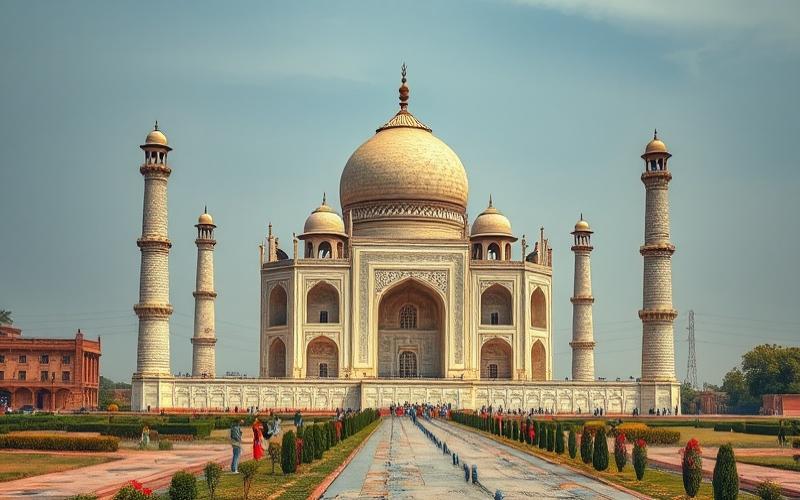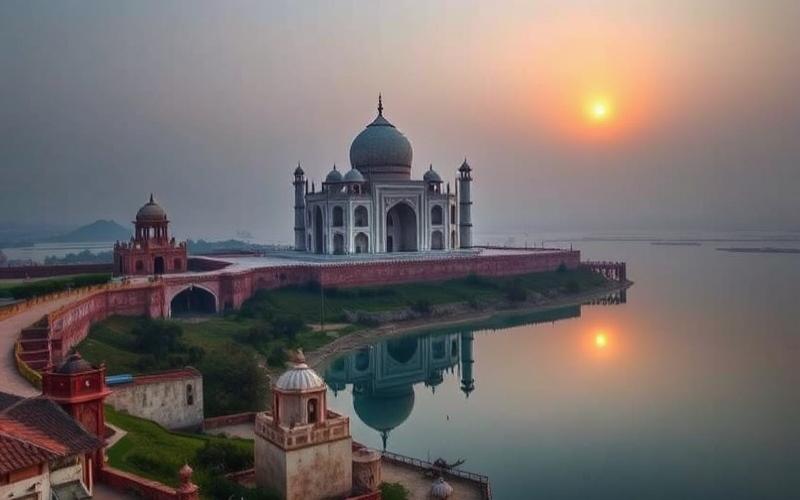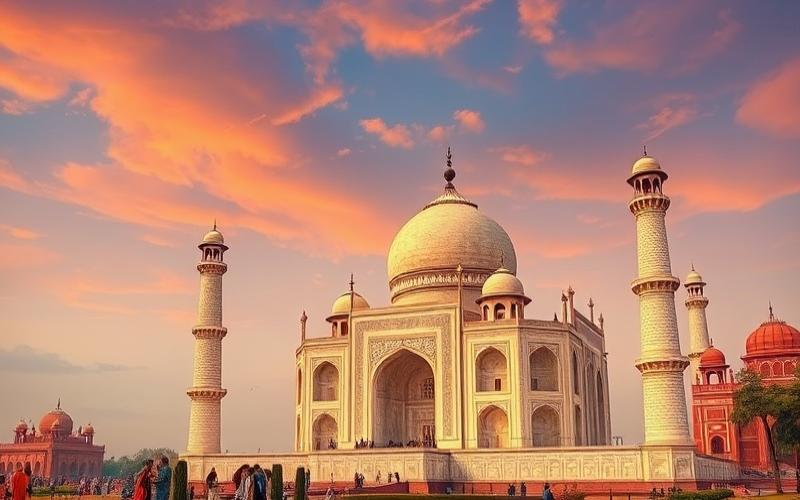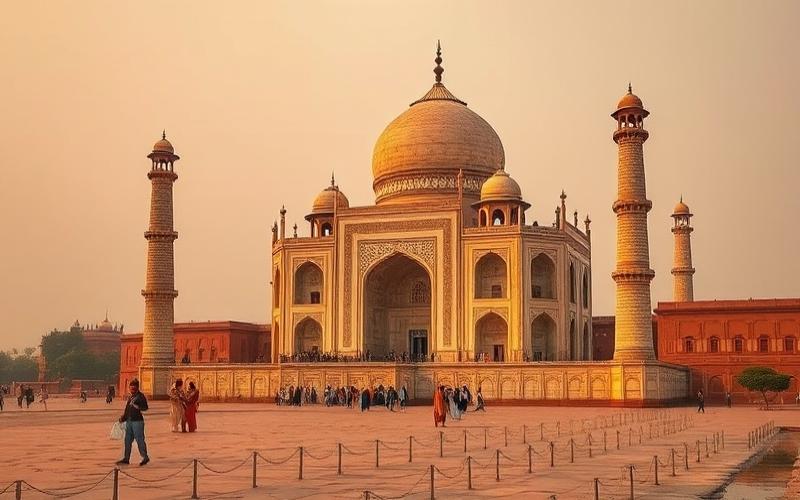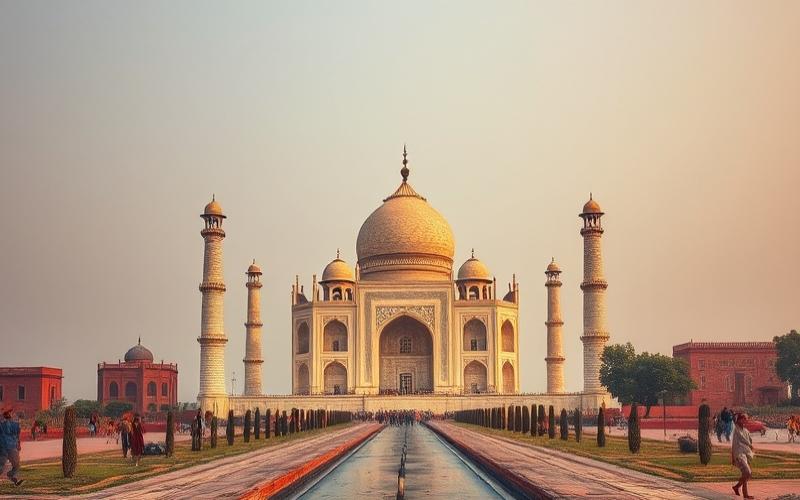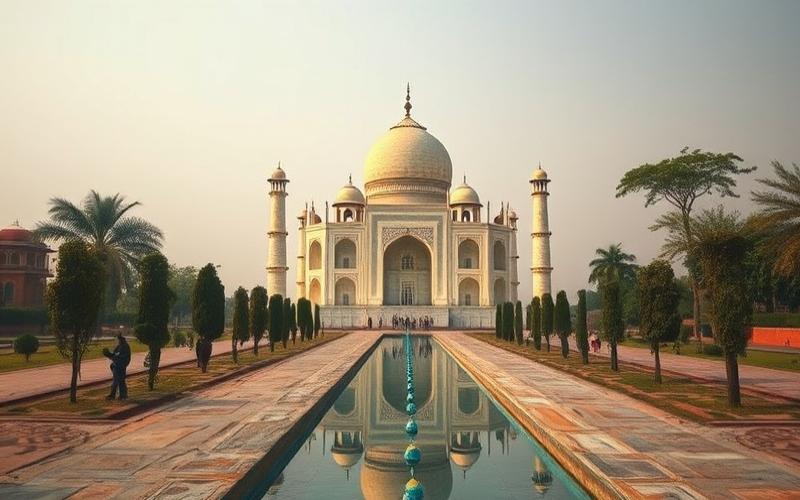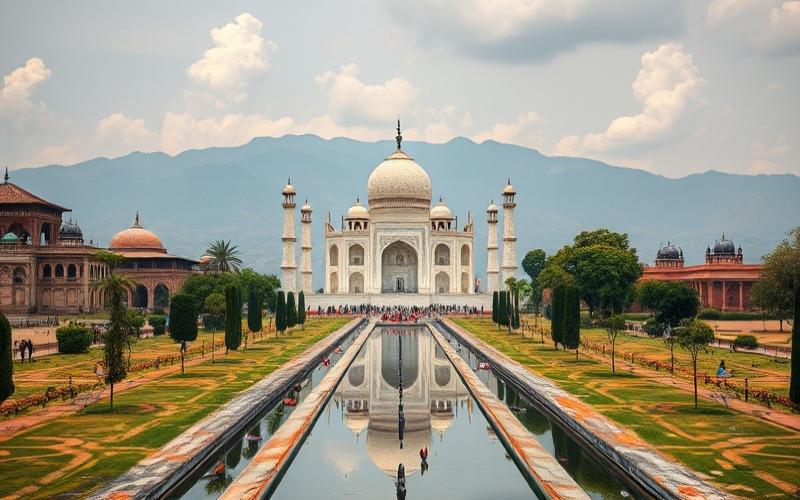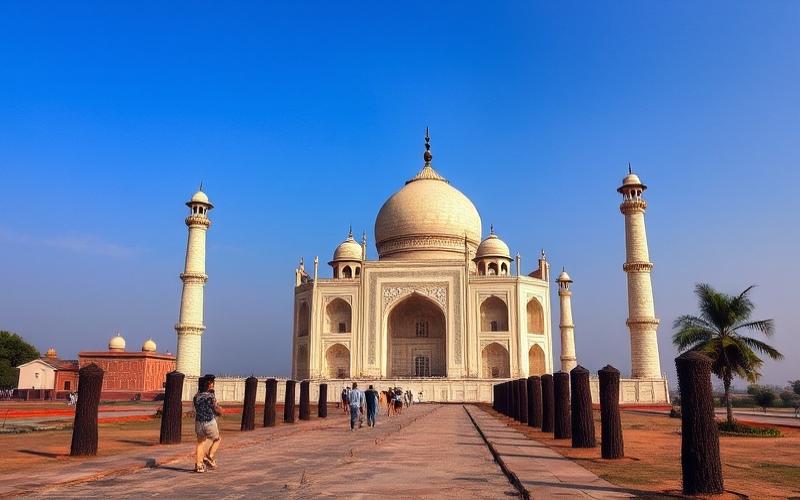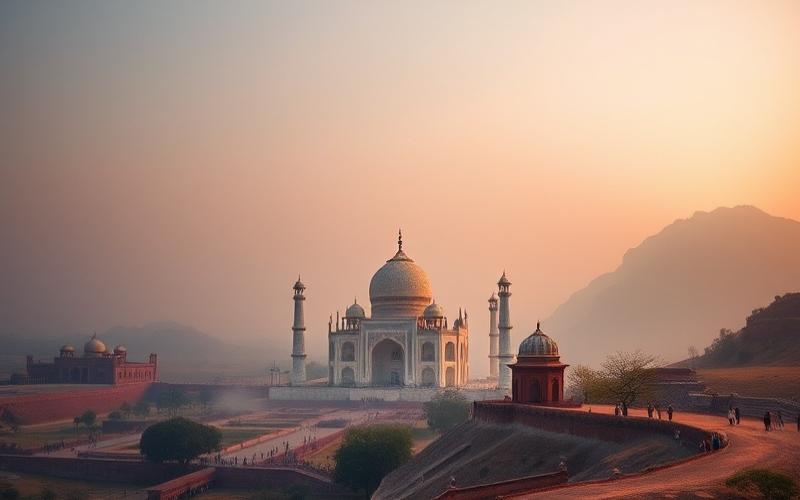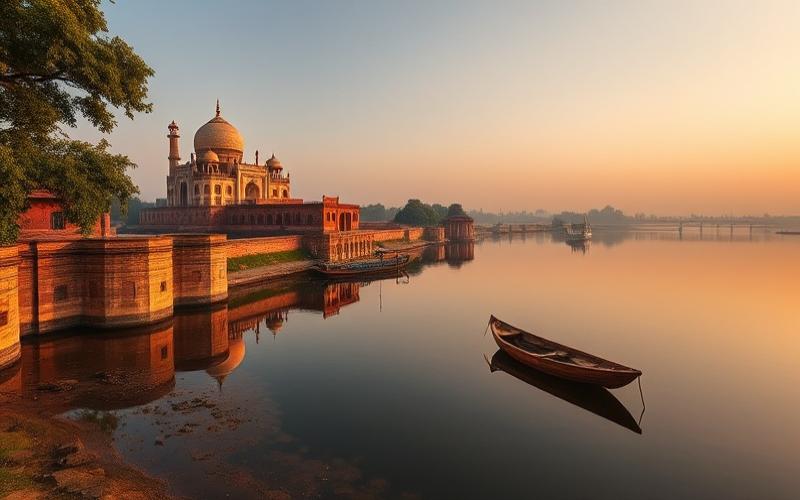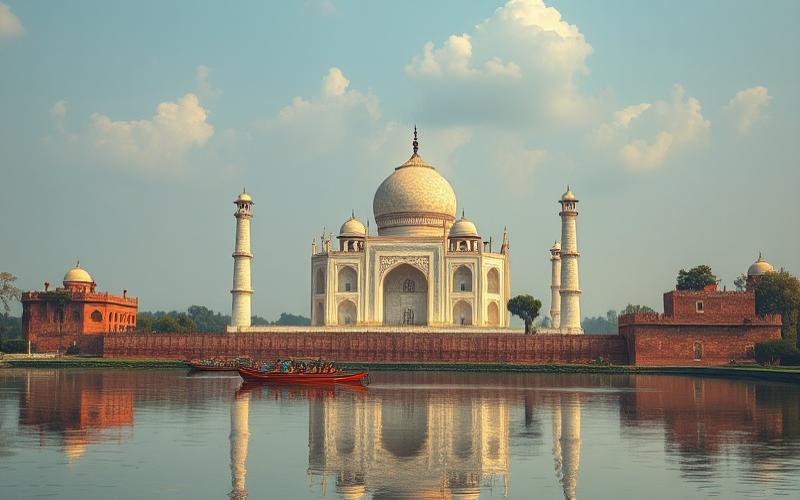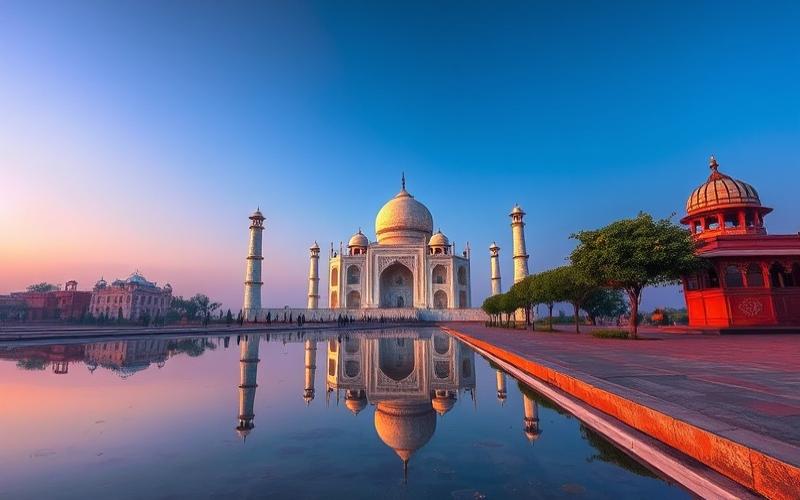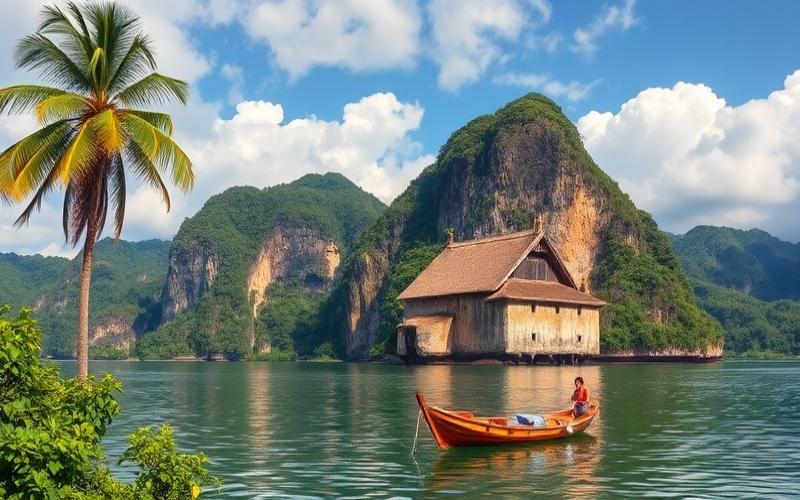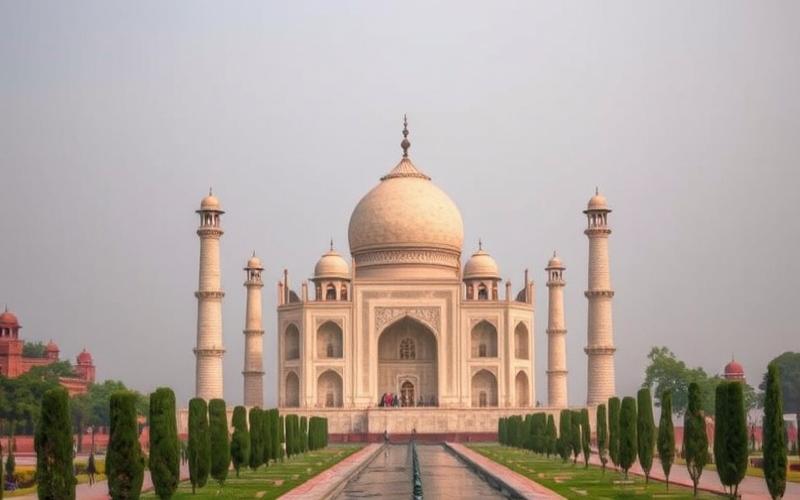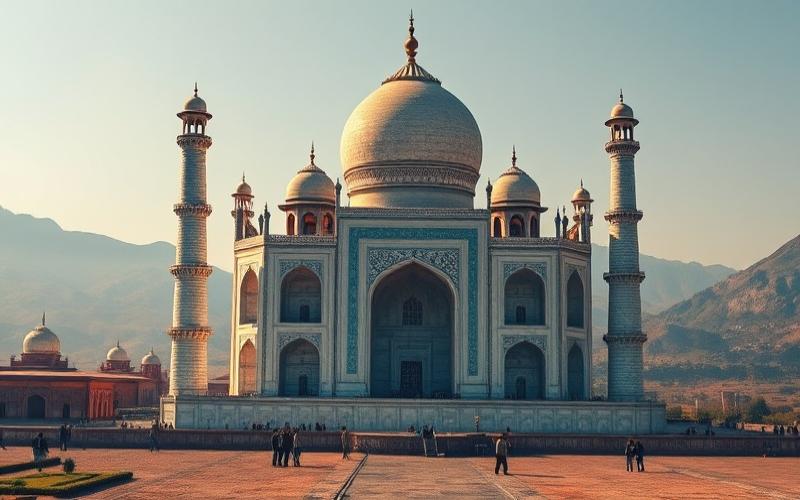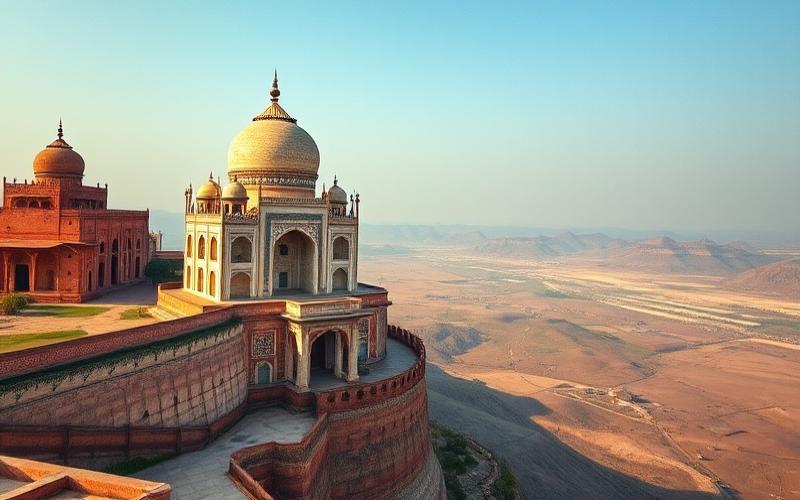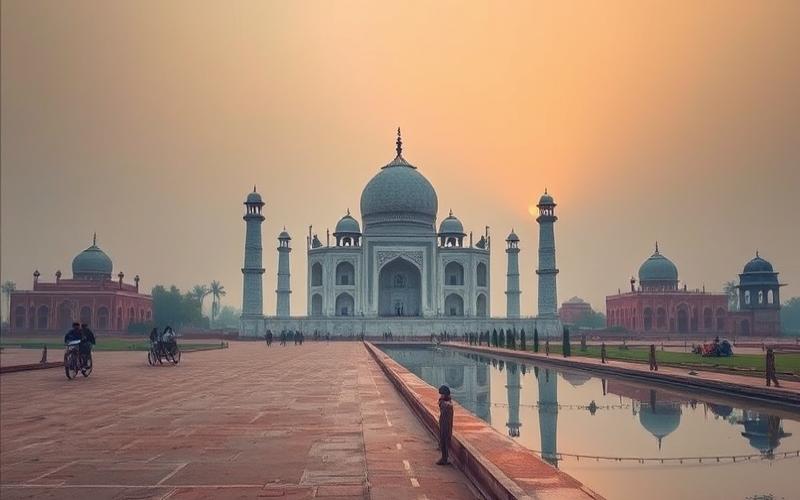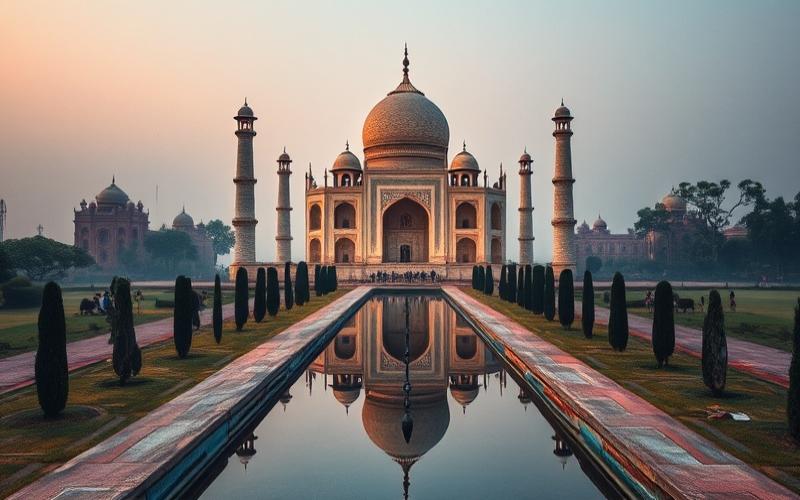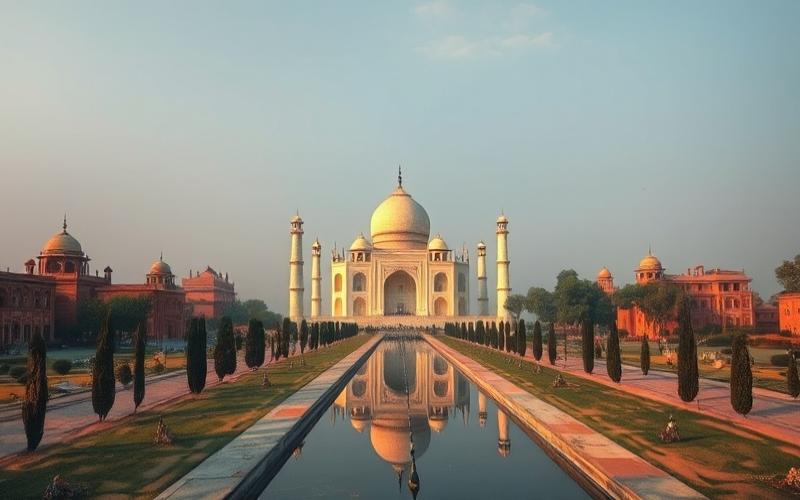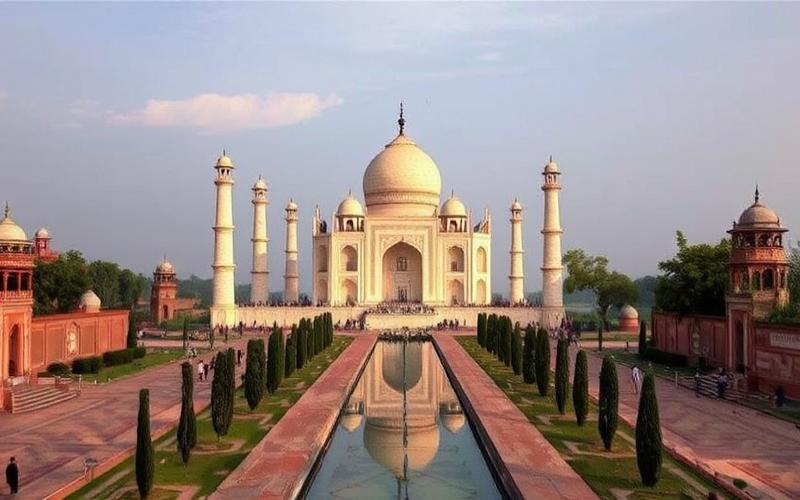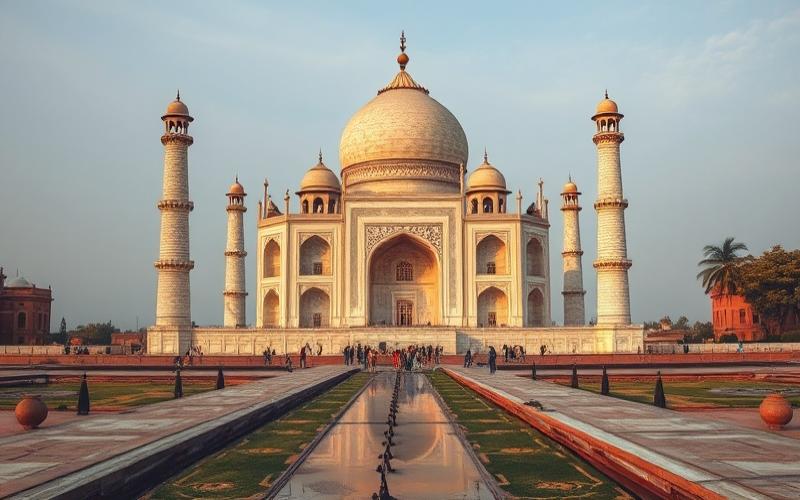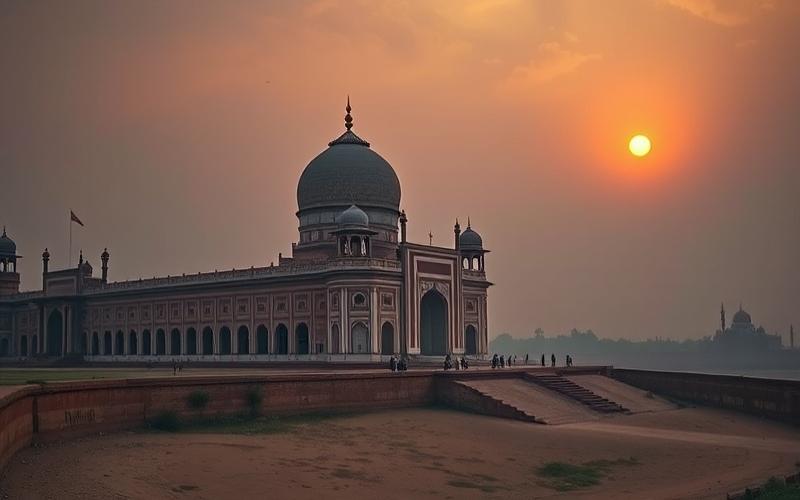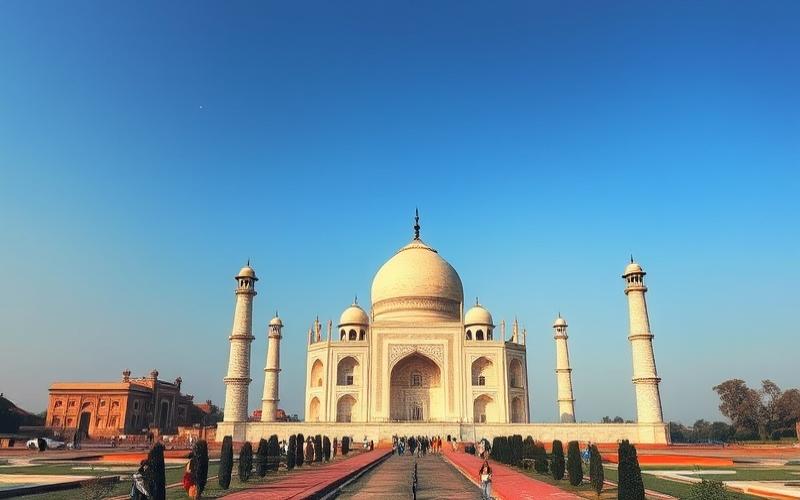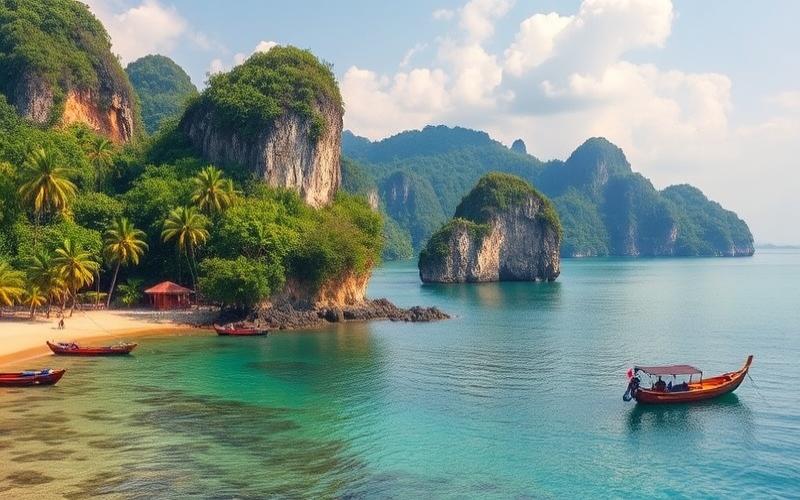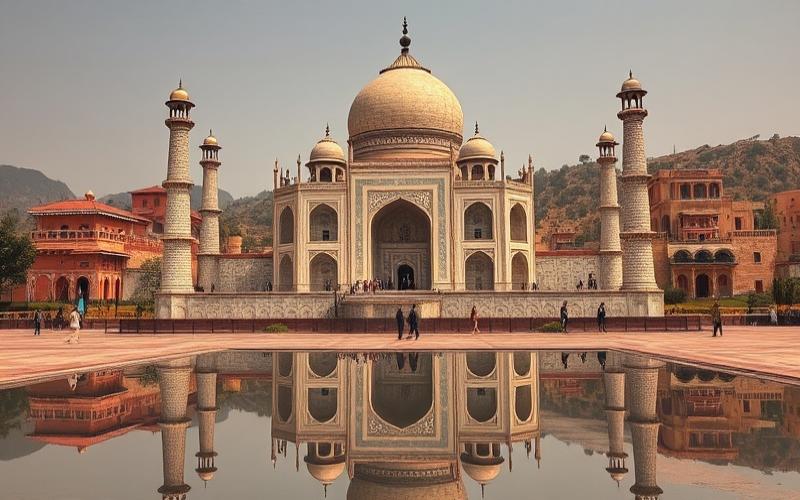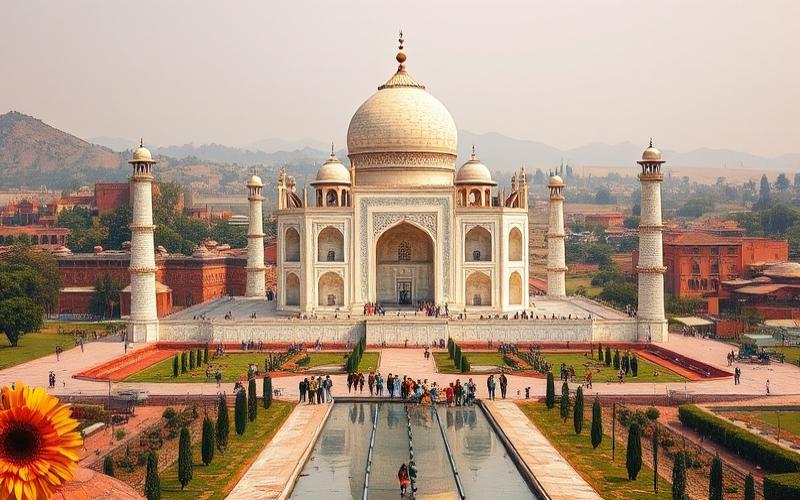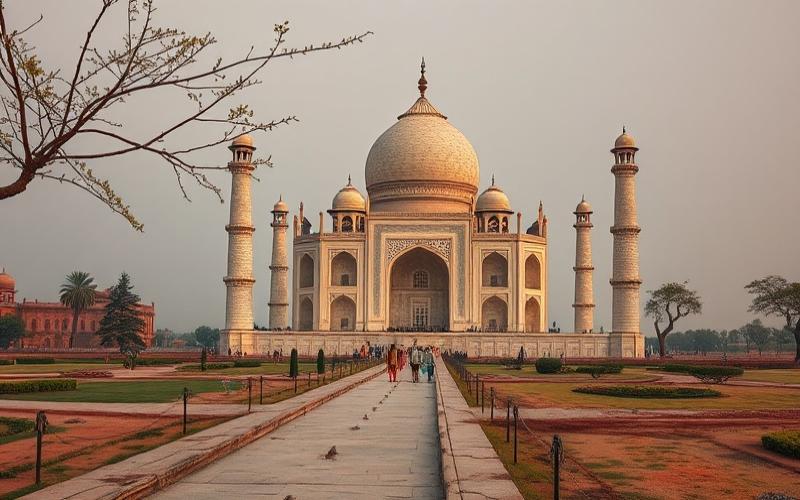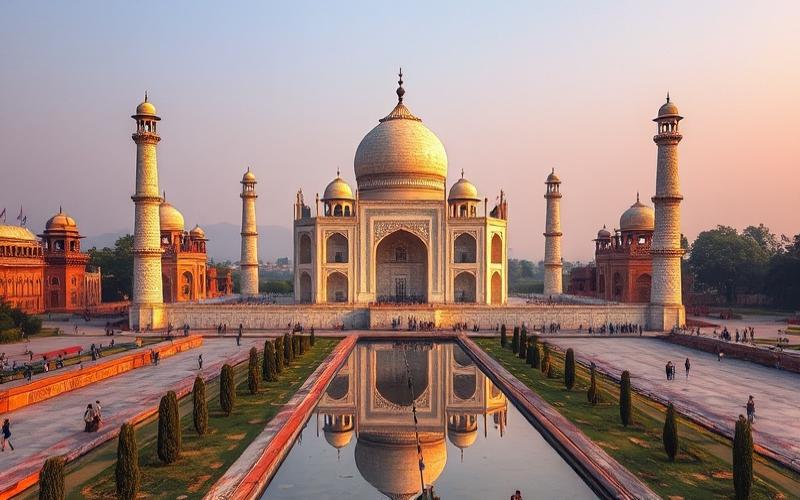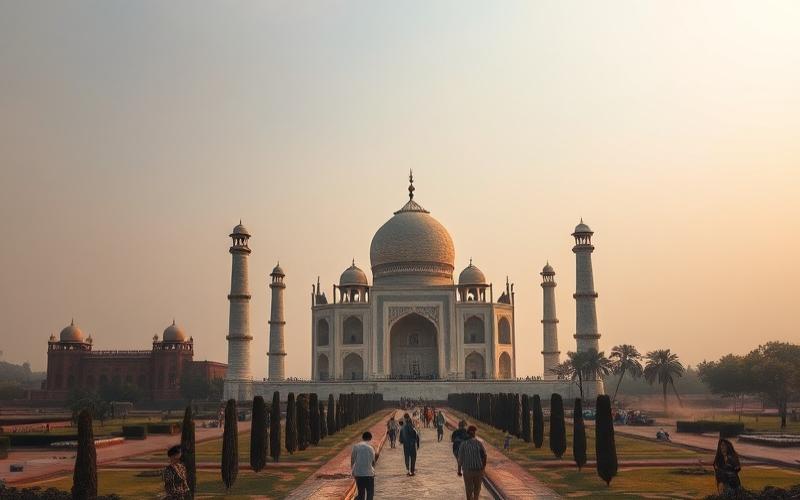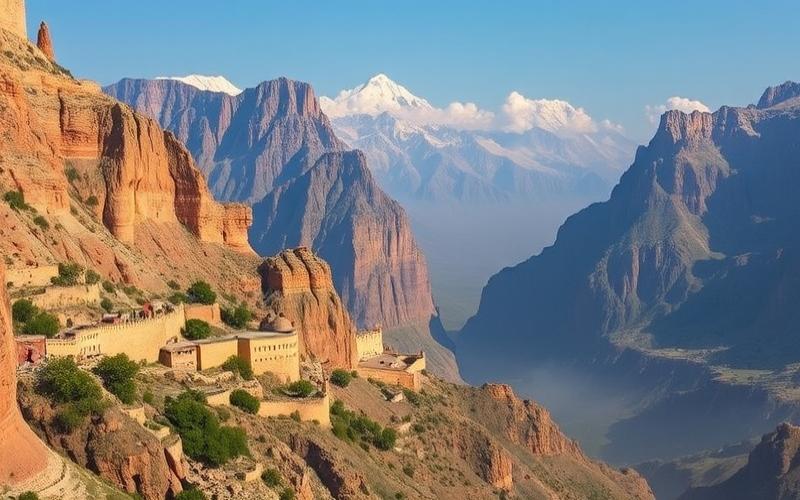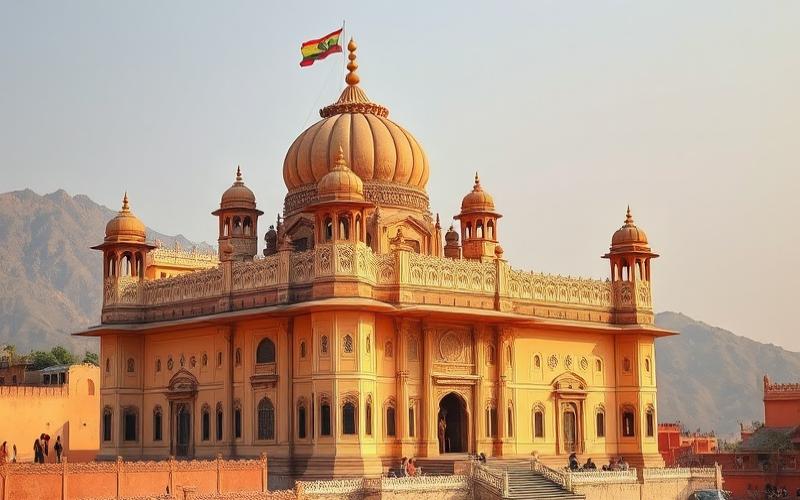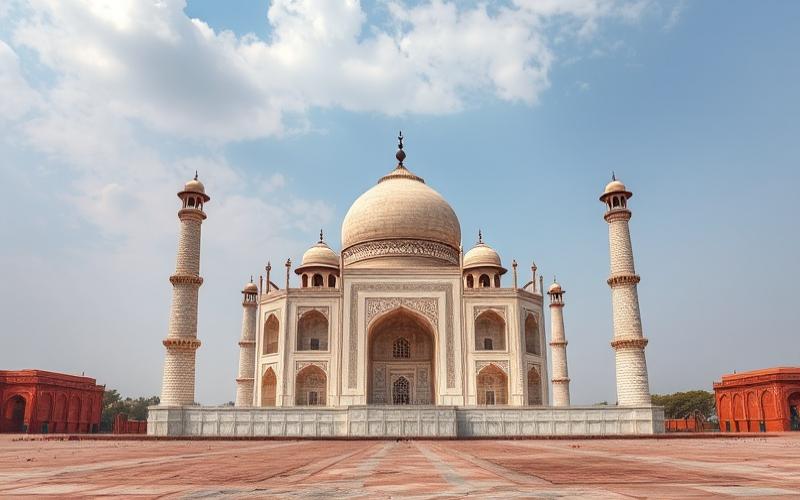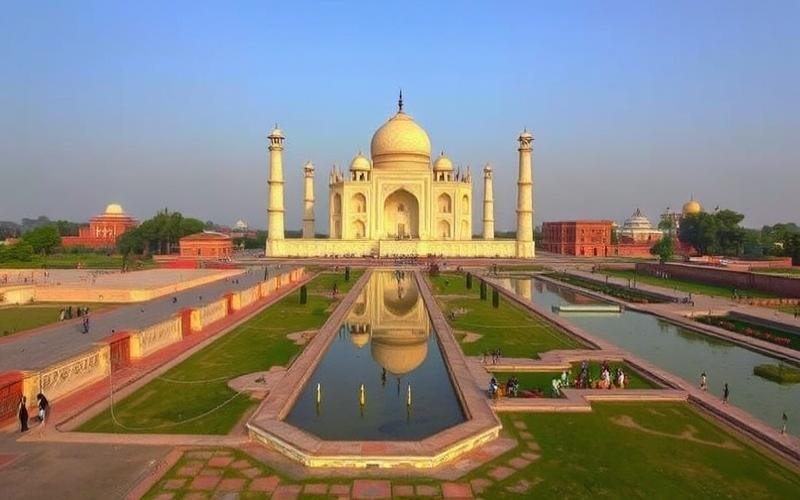
 Published on and written by Cyril Jarnias
Published on and written by Cyril Jarnias
Settling in India represents an adventure as fascinating as it is complex, requiring quick adaptation to an extremely diverse climate. Whether you find yourself in the humidity of Mumbai or the arid climate of Jaipur, understanding and adapting to local weather conditions is essential for a successful expatriation. This article offers practical advice and clever tips for tackling the challenges posed by these unique weather conditions, ensuring a smooth transition and promoting a rewarding experience on the Indian subcontinent.
Adapting to Indian Heat: Strategies for Staying Cool
Practical Strategies for Staying Cool in India
- Choose lightweight, loose-fitting clothing made from natural fibers (cotton, linen) to facilitate sweating and air circulation.
- Wear light colors that reflect sunlight and absorb less heat.
- Avoid synthetic fabrics that trap heat and moisture.
Dietary Tips to Avoid Dehydration
- Drink water regularly, even without feeling thirsty, and prefer filtered or bottled water.
- Consume water-rich fruits (watermelon, cucumber, melon, citrus fruits).
- Limit alcohol and coffee consumption as they promote dehydration.
- Incorporate light, mildly spiced dishes rich in fresh vegetables.
Optimizing Living Space
- Use ceiling or table fans to promote air circulation.
- Close shutters or curtains during the hottest hours to limit heat entry.
- Install air conditioners or air coolers suitable for the room size.
- Place green plants inside and around the home to create natural shade areas and improve coolness.
- Use natural fiber rugs that don’t store heat.
| Method | Advantage |
|---|---|
| Fan | Low consumption, moving air |
| Air Conditioner | Rapid cooling, precise control |
| Green Plants | Natural cooling, humidification |
| Thick Curtains | Reduces solar heat |
Adapting Physical Activity
- Prioritize physical activities early in the morning or late in the evening when temperatures are lower.
- Avoid intense exertion between 11 AM and 5 PM, the hottest part of the day.
- Wear a cap or hat and use sunscreen during outdoor outings.
Appropriate Skin Care and Cosmetics
- Use high-SPF sunscreen to protect against UV rays.
- Choose non-greasy moisturizers suitable for skin exposed to heat.
- Prefer aloe vera gels or light lotions to soothe the skin.
Local Solutions and Construction
- Opt for housing built with local insulating materials (rammed earth, bricks, stone) that limit indoor heat buildup.
- Prefer homes with green roofs or shaded terraces.
- Check the home’s orientation: north or east facing limits direct afternoon sun exposure.
- Use external blinds, awnings, or balconies to create shaded areas.
Key Takeaways:
Staying cool in India requires a combination of smart clothing choices, appropriate diet, living space optimization, and adopting local architectural solutions to maximize comfort in the face of heat and humidity.
Good to Know:
To adapt to India’s hot climate, choose lightweight cotton clothing that promotes air circulation, and stay hydrated by regularly drinking water, electrolyte drinks, or coconut water. Optimize your living space using fans or air conditioners, and add plants for natural coolness. Schedule physical activities during cooler hours, early morning or evening, and opt for light, non-greasy body care suitable for high temperatures. Building materials like brick or bamboo, along with house orientation to limit direct sun exposure, can provide better heat insulation.
Maintaining Health Under the Indian Climate: Tips and Precautions
Main Climate Characteristics of India
- India experiences significant seasonal variability with four main seasons:
- Winter (January to March): cool temperatures, around 50-59°F in the northwest, 68-77°F in the southeast.
- Summer or pre-monsoon (March to June): intense heat, 90-104°F in the interior, high humidity.
- Monsoon (June to September): heavy rains, maximum humidity, flood risks.
- Post-monsoon (October to December): decreasing rains, moderate heat, drier climate in the northwest, residual rainfall in the south.
Temperatures vary greatly by region and season, ranging from temperate conditions in the Himalayas to extreme heat in the central plains.
Humidity is very high during monsoon, moderate in winter, and very low during summer heat peaks.
Seasonal Health Risks and Prevention
| Season | Common Health Risks | Prevention Measures |
|---|---|---|
| Summer/pre-monsoon | Heat stroke, dehydration, sunstroke | Regular hydration, limit physical exertion, prefer shaded areas, loose light clothing, sun protection |
| Monsoon | Waterborne diseases (diarrhea, typhoid, cholera), skin infections, dengue, malaria | Consume boiled or filtered water, avoid raw foods, protect against mosquitoes (nets, repellents), keep skin dry |
| Winter | Respiratory infections, colds, asthma aggravation | Cover up at night, ventilate enclosed spaces, monitor air quality |
Hydration and Safe Local Consumption
- Drink frequently, even without feeling thirsty, especially during heatwaves.
- Prefer sealed bottled water, boiled or filtered.
- Avoid ice, street juices, and pre-cut fruits.
- Consume safe local drinks (fresh coconut water, boiled herbal teas).
Nutritional Recommendations Adapted to Climate
Favor a light diet that’s easy to digest:
- Washed fresh fruits, cooked vegetables, rice, lentils, plain yogurt.
Prefer water-rich foods (watermelon, cucumber, melon) and mildly spiced local dishes during heatwaves.
Adjust calorie intake according to physical activity and climate conditions (eat lighter in summer).
Avoid fatty and heavy foods, especially during monsoon when digestion slows.
Skin Care and Sun Protection
- Apply broad-spectrum sunscreen (SPF 30 minimum) on exposed areas, reapply after swimming or sweating.
- Wear a wide-brimmed hat, sunglasses, and covering clothing in lightweight, breathable fabrics (cotton, linen).
- Use moisturizing balms to prevent dryness or skin irritation.
- Wash regularly to remove sweat, dust, and pathogens.
Appropriate Clothing and Insect Protection
- Choose long, loose, light-colored clothing to limit sun exposure and protect against insect bites.
- Prefer natural fabrics that promote sweat evaporation.
- Use mosquito repellents on skin and clothing, especially in the evening and during monsoon.
- Wear closed shoes in rural or humid areas.
Mental Health and Climate Stress Management
- Take regular breaks in shaded or cool places to recover.
- Practice relaxation activities: meditation, yoga, deep breathing.
- Maintain a regular sleep schedule despite time difference or heat.
- Don’t hesitate to adjust daily plans according to climate intensity (avoid outings during hottest hours).
Key Takeaways:
Adapting to the Indian climate relies on vigilance against seasonal risks, constant hydration, appropriate diet, adequate skin and clothing protection, along with special attention to mental health to fully enjoy the local experience.
Good to Know:
India presents a diverse climate with scorching summers, humid monsoons, and moderate winters, each bringing its own health challenges. In summer, heat stroke risk is high, making it crucial to drink enough filtered water and avoid prolonged sun exposure, using high-SPF sunscreens. Monsoon can carry waterborne diseases, making treated water consumption essential, along with wearing light but covering clothing to protect against mosquitoes. Adopt a diet rich in fresh local fruits and vegetables, easy to digest, which helps maintain energy without burdening the digestive system. Prefer cotton clothing for breathability, and expect to alternate between lightweight outfits and warmer clothes according to temperature fluctuations. Don’t neglect skin care, regularly apply moisturizer to avoid irritation in this demanding climate. Finally, ensure your mental well-being by including regular breaks and relaxation moments to counter climate stress effects, thus better adapting to variations in this rich environment.
Adapting Your Home to Climate Variations in India
Main Climate Variations in India and Impacts on Daily Life
- Hot season (March to June): Very high temperatures (90 to 113°F depending on region), often stifling heat, warm nights, gradual humidity increase. Resident comfort is severely tested, requiring shade seeking, good ventilation, and increased water consumption.
- Monsoon (June to September, sometimes until October depending on region): Intense rainfall, very strong humidity, flood risks and power outages. Travel becomes complicated, humidity affects food preservation and promotes mold growth.
- Winter (October to March): Moderate to cold temperatures (down to 32°F in the north, 68-77°F in the south). Thermal comfort is generally pleasant except in the north and mountainous regions where cold may require supplemental heating.
Adapted Building Materials
- Clay bricks: Good thermal insulation, natural humidity regulation, local availability.
- Stone: High thermal inertia, ideal for retaining coolness in summer and warmth in winter.
- Bamboo: Lightweight, renewable, effective for natural ventilation and sun protection.
- Terracotta tiles: Suitable for roofs, promote thermal regulation.
Recommended Thermal Insulation Solutions
- Ventilated roofs: Installation of raised or double-skin roofs to allow air circulation and limit overheating.
- Double glazing: Limits thermal exchange, reduces heat penetration in summer and retains warmth in winter.
- Insulating coatings: Use of lime or natural plasters on walls to limit thermal exchange.
- Reflective under-roofing: Reduces solar heat absorption.
Effective Natural Ventilation
- Adjustable louvered windows (jalousies) to capture prevailing breezes while protecting from rain.
- Cross-ventilation systems: openings positioned opposite each other to allow air circulation.
- High openings under roofing (transom windows) to allow hot air to escape naturally.
- Patio or interior courtyard to create cooling air currents.
Landscaping Practices to Moderate Temperature
- Planting deciduous trees around the house to provide shade in summer and allow light in winter.
- Using rooftop gardens (green roofs) to limit overheating of rooms under roofs.
- Ponds or water features near the dwelling to cool the ambient air.
- Vegetative hedges to filter hot, dusty winds.
Humidity Management During Monsoon
- Using portable dehumidifiers in rooms prone to condensation.
- Applying anti-humidity or waterproof paints on walls and ceilings.
- Regularly airing out rooms to prevent stagnant humid air.
- Elevating furniture and mattresses to limit contact with damp floors.
Water Management and Storage
| System | Main Function |
|---|---|
| Rainwater harvesting | Storage of rooftop water during monsoon |
| Underground cisterns | Water reserve for dry season |
| Natural filters | Purification of rainwater for domestic use |
Adaptation to Local Specificities
Adaptation of practices and materials must consider regional climate particularities (Rajasthan’s aridity, Kerala’s humidity, Himalayan rigor) along with local resources and know-how. Smart integration of these solutions improves comfort, reduces environmental footprint, and facilitates expatriates’ integration into Indian lifestyle.
Good to Know:
In India, climate variations marked by a hot season, monsoon, and winter months require specific adaptations for domestic comfort. For construction, prefer materials such as clay bricks and bamboo for better thermal regulation. Insulation plays a crucial role; consider ventilated roofs and double glazing to maintain pleasant indoor temperatures. Improve natural ventilation by installing louvered windows or cross-ventilation systems to expel summer heat. Planting trees strategically around the house and opting for rooftop gardens can also moderate temperatures. During monsoon, humidity management is essential; use dehumidifiers and anti-humidity paints to prevent mold. Additionally, implementing rainwater harvesting systems and reservoirs is wise for optimizing water management throughout the year. Adapting these practices to local conditions in India not only guarantees increased comfort but also facilitates expatriates’ daily integration.
Equipping Daily Life: Essential Accessories for Expatriates in India
To adapt to India’s climate variations, it’s essential to choose clothing and accessories that offer comfort and practicality in daily life.
Appropriate Clothing
- Prefer breathable materials like linen or technical fabrics to withstand heat and humidity.
- Avoid thick cotton and denim that retain sweat and dry slowly.
- Choose loose pants, light shirts, short-sleeved tunics, very common locally.
- Pack a fleece jacket or warm vest for mountainous regions or during winter (some cities experience temperatures near 32°F).
- Add to your suitcase: breathable underwear, light socks, swimsuit for beach/pool, shawl or scarf for temples.
| Climate | Recommended Clothing | Recommended Materials |
|---|---|---|
| Hot/humid | Loose pants, light tunic | Linen, technical fibers |
| Cool/mountain | Fleece jacket/warm vest | Multilayer softshell |
| Rain/variations | Waterproof windbreaker | Waterproof membrane |
Practical Accessories
- Comfortable and durable shoes: aerated sandals for the city; sturdy sneakers or hiking shoes for excursions/hikes.
- A hat/cap effectively protects from intense Indian sun.
- Quality sunglasses, essential against glare and tropical UV rays.
List of Daily Essentials
- Filtering water bottle: ensures safe hydration during urban or rural travel
- Sunscreen suitable for tropical climate
- Portable fan: useful during heatwaves (up to 113°F in some regions)
For maximum cultural integration while remaining comfortable:
– Buy some traditional outfits locally (sari, salwar kameez, lungi), often more suitable than imported ones
Additional Tips
Bringing a universal adapter compatible with the Indian electrical network (mainly type D plug) greatly facilitates digital daily life
Good to Know:
To adapt to India’s varied climate, it’s essential to equip yourself with clothing in breathable materials like cotton for humid heat, while planning warmer clothes for cooler regions. Comfortable and sturdy shoes are indispensable for daily travel, accompanied by a hat or cap and quality sunglasses to protect from strong sunlight. Sunscreen suitable for tropical climate and a filtering water bottle will help stay hydrated and protected during your travels. A portable fan can provide welcome relief during sweltering days, while an electrical plug adapter compatible with the local network will save you from inconveniences. These essential accessories combine comfort and practicality, thus facilitating adaptation to the Indian climate.
Disclaimer: The information provided on this website is for informational purposes only and does not constitute financial, legal, or professional advice. We encourage you to consult qualified experts before making any investment, real estate, or expatriation decisions. Although we strive to maintain up-to-date and accurate information, we do not guarantee the completeness, accuracy, or timeliness of the proposed content. As investment and expatriation involve risks, we disclaim any liability for potential losses or damages arising from the use of this site. Your use of this site confirms your acceptance of these terms and your understanding of the associated risks.

